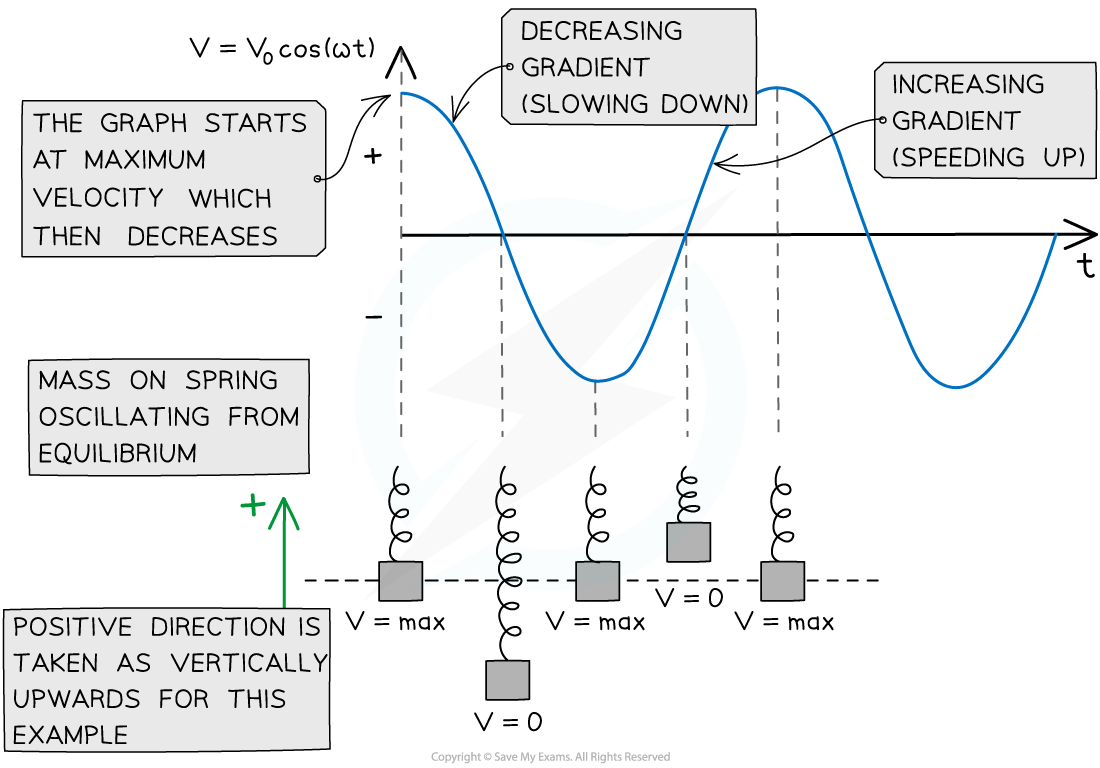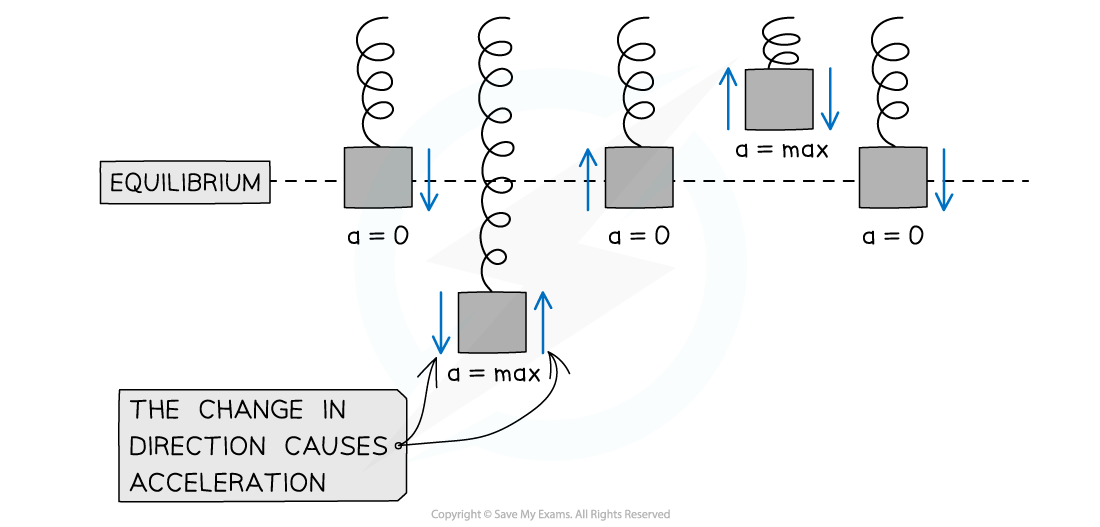Calculating Maximum Speed & Acceleration (AQA A Level Physics): Revision Note
Exam code: 7408
Maximum Speed
The maximum speed of an oscillator, vmax, is given by the equation:
vmax = ωA
Where:
vmax = maximum speed (m s-1)
ω = angular frequency (rad s-1)
A = amplitude (m)
This comes from the SHM speed-equation
Where:
v is maximum at the equilibrium position x = 0
So,
When an oscillator begins its motion at the equilibrium position then the velocity-time graph is a cosine graph
The maximum speed of an oscillator is the amplitude, v0 of the velocity-time graph
For a mass oscillating on a vertical spring:
vmax occurs when the spring is in its equilibrium position
v = 0 at the amplitude position

The maximum speed of a mass on a spring is at the equilibrium position. Its speed is 0 at its positive and negative amplitude
Worked Example
Calculate the frequency of an oscillator with a maximum speed of 12 m s-1 and amplitude of 1.4 m.
Answer:
Step 1: State the known values
Maximum speed, vmax = 12 m s-1
Amplitude, A = 1.4 m
Step 2: Write down the equation
vmax = ωA
Step 3: Rewrite angular velocity in terms of frequency f
ω = 2πf
vmax = 2πfA
Step 4: Rearrange for frequency, f
Step 5: Substitute in the values
Maximum Acceleration
The maximum acceleration, amax of an oscillator will occur when the gradient of the velocity-time graph is steepest
When v = 0 m s−1 at x = A
Acceleration is zero at the equilibrium position (x = 0)
The maximum acceleration is given by the equation:
amax = ω2A
Where:
amax = maximum acceleration (m s2)
ω = angular frequency (rad s-1)
A = amplitude (maximum displacement, x) (m)
This comes from the defining equation of SHM:
a = −ω2x

The maximum acceleration of a mass on a spring is at its positive and negative amplitude. Its acceleration is 0 at the equilibrium position
Worked Example
Calculate the maximum acceleration of an oscillator with a time period of 0.4 s and amplitude of 2.8 m.
Answer:
Step 1: State the known values
Time period, T = 0.4 s
Amplitude, A = 2.8 m
Step 2: Write down the equation
amax = ω2A
Step 3: Rewrite maximum acceleration with time period T
Step 4: Substitute in the values
Examiner Tips and Tricks
Make sure not to get mixed up with lowercase a (acceleration) and uppercase A (amplitude). Make sure you feel confident moving between the equations in their various forms.

Unlock more, it's free!
Did this page help you?